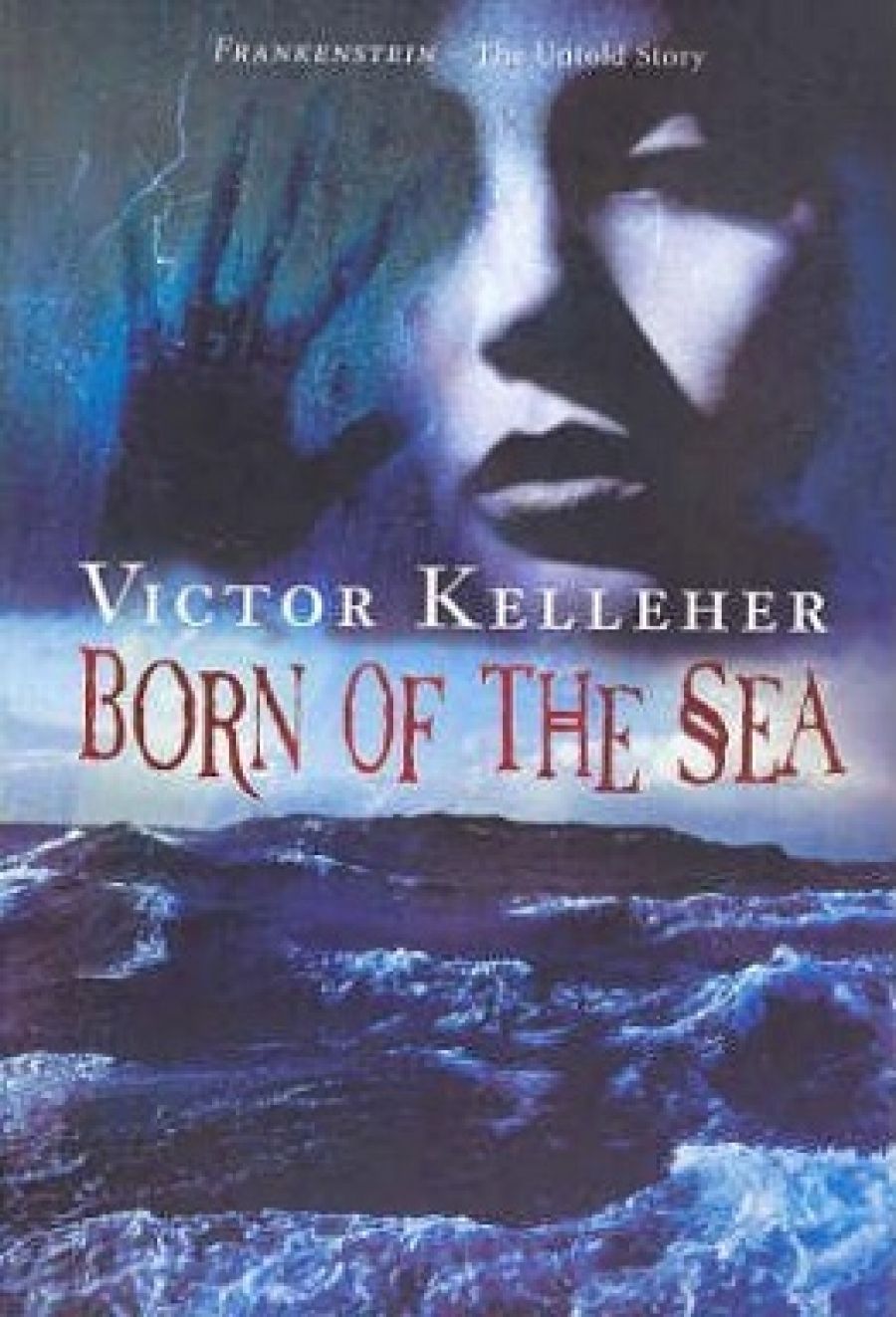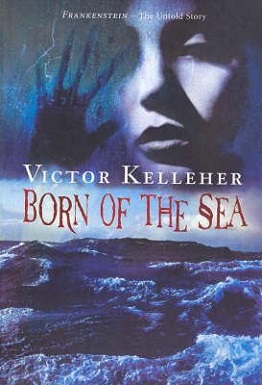
- Free Article: No
- Contents Category: Fiction
- Review Article: Yes
- Article Title: Stitched Up
- Online Only: No
- Custom Highlight Text:
The tradition of supplementary fiction dates at least from the fifteenth century, when supplements to the works of Geoffrey Chaucer were generated by the perception that his texts were unfinished or that he had not imposed a sufficiently firm moral closure on them. Robert Henryson famously thought Chaucer hadn’t punished Criseyde enough for her betrayal of Troilus, and set out to remedy the omission in his own Testament of Cresseid. In a more recent example, Emma Tennant’s execrable Pemberly traces the tempestuous married life of Jane Austen’s Darcy and Elizabeth, though in the style of a Neighbours episode.
- Book 1 Title: Born of the Sea
- Book 1 Biblio: Viking, $29.95 pb, 339 pp
- Book 1 Cover Small (400 x 600):

- Book 1 Cover (800 x 1200):

Victor Kelleher’s Born of the Sea is both a sequel to, and a correction of, its parent text, Mary Shelley’s Frankenstein. The back cover blurb (set, incidentally, in a font reminiscent of the Warner Brothers’ Harry Potter logo) describes it as ‘A great Gothic tale revisited’. It is the autobiographical narrative of Madeleine Sauvage, the ‘bride’ Frankenstein began to produce for his monster, before abandoning his work and discarding its unfinished parts into the sea. Like Venus, Madeleine is ‘born’ from the sea, with a beautiful face, but with outsized and mismatched limbs, a ‘ragtag body seeping blood and lymph’.
Madeleine recounts her rescue by Kitty, a deformed outcast with a handy talent for needlecraft. Kitty re-sews Madeleine’s botched body. And thus begins the ‘gothic’ narrative of the heroine’s sufferings: her repeated rape; the death of her child; and her journeys of discovery and revenge to seek out first her maker, Victor Frankenstein, then her ‘husband’, the monster, and eventually her ‘mother’, Mary Shelley herself.
Like all writers of supplementary tales, Kelleher has to work hardest at the points where his story intersects with the ‘reality’ of the parent text. We learn, for instance, that Frankenstein is still alive in Geneva, but was driven so mad by his wife’s death that he spent a year on what his brother calls ‘a mental journey’, believing he was pursuing the monstrous fiend ‘through the northern wastes, bent on vengeance’. Thus Kelleher sutures his own novel on to Shelley’s, so he can revive her characters while also ‘explaining’ things she did not understand or know about her own creation. Further explanations are necessary to account for the meeting of character and author: the novel is structured as a series of evenings in which Madeleine narrates her own story to Shelley, who is on her deathbed. In some instances, the narrative threads are pulled tight; at others, the sutures are as ragged as Frankenstein’s. This is one question the novel can neither raise nor answer: if it is monstrous to stitch mismatched body parts together, what are the implications for narratives that are similarly stitched?
Kelleher’s solution is to refer this unspeakable problem to the original author. Accordingly, Shelley becomes the silent listener, the ideal reader to sanction the birth of this new text. As character, Mary Shelley is presented as eager to hear Madeleine’s account, though she herself has become almost monstrous and virtually speechless as she approaches death.
‘ … you mean I should stop? That we should venture no further along the way?’
A shake of the head, her good eye glowing in the candlelight.
‘Never!’ That one word unmistakeable. Then something more that I do not quite follow, about journeys and endings – though it is easy enough to guess her meaning on this occasion.
It is easy to read psychoanalytically here: Oedipus-like, Kelleher must displace, silence and even kill off his original author. Born of the Sea thus poses Shelley’s original questions about the relationship between created and creator at several levels, though the novel rarely pauses long enough to work through these issues in any depth before it moves on to the next scene of bloody revenge.
Kelleher’s text is truly Gothic, in its fascination with body parts, pornographic torture, sexual subjection and the anarchy of revolutionary France (Madeleine’s head turns out to have belonged to an aristocrat beheaded in the Terror): all narrative occasions around which to explore the darker aspects of human nature and its psychological extremes. Kelleher struggles to make sense of his main character, though; he seems torn between wanting to explore her ‘loving heart’, to make her a figure of redemption worthy of Shelley’s interest and affection, while also proffering an almost Sadeian amorality in her accounts of murder and revenge. The contradictions are rarely psychologically satisfying.
Part of the gruesome problem derives from the novel’s fixation with Frankenstein’s needlework, and the monstrous fragmentation of self and subjectivity that result. Is Madeleine a series of parts or a whole? Why should her pretty aristocratic head preserve a repressed memory of its past life, while her anonymous womb, for example, does not?
Kelleher attempts to work through some of the philosophical problems of selfhood, creation and suffering raised in Shelley’s text, but the meditations on these issues are surprisingly, disappointingly flat: ‘How can words de-scribe my entrance into that house? Its astonishing effect? How it took me by surprise? Ambushed me, so to speak? ... Oh, I was prepared to some degree. Ready … no, braced for a flood of surprising memories, for a veritable tidal wave of them if need be.’
All supplements to beloved canonical texts set the stakes and the terms of comparison very high. Unlike Mary Shelley’s text, which raises more questions that it directly answers, Born of the Sea exhausts most of its narrative energy in filling up the gaps, tying up Frankenstein’s loose threads.


Comments powered by CComment